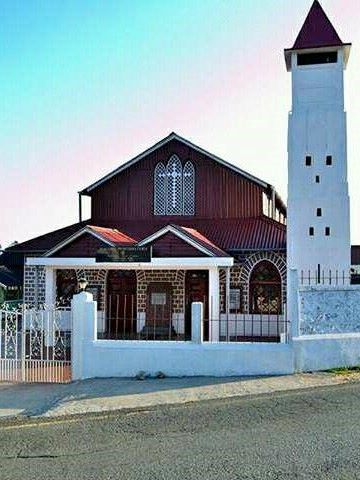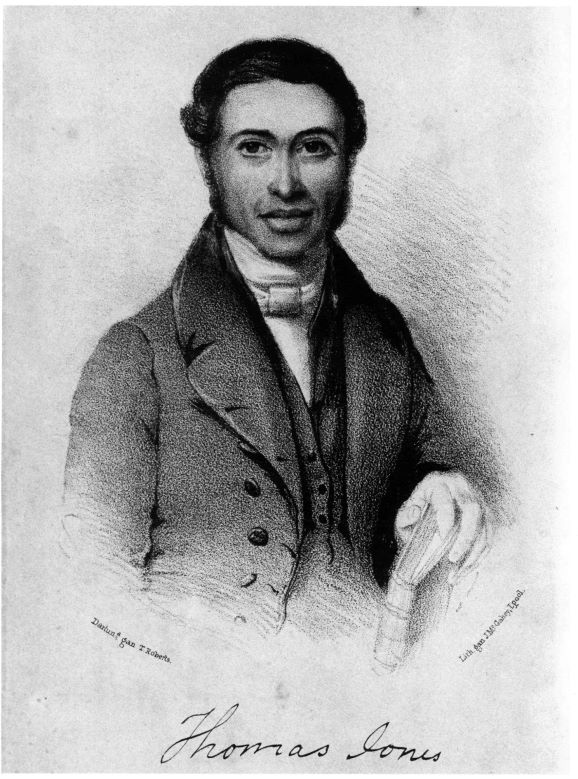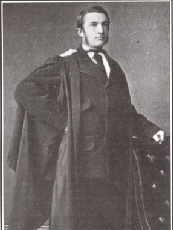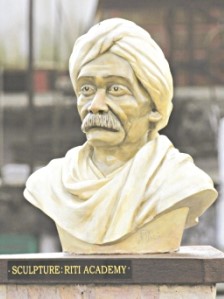The Language
The Khasi language did not have any script. The early missionaries from Serampore in the present Indian state of West Bengal attempted to write down the Khasi language using the Bengali script. But there were few takers among the Khasis. Rev. Thomas Jones, the first Welsh missionary amidst the Khasis and who is now honored as the ‘Father of Khasi Alphabets’, used the Roman script in the early 1840s to
write down the Khasi spoken language.
Neither the then British government establishment ruling the place was in favour of this attempt nor the superiors of the young missionary at the Welsh Mission Society at Liverpool. However, the writing of Khasi language using the Roman script was well received by the Khasis and is now well established.
…. Continued after the Menu.
Dr. John Roberts, a Welshman from Corris, was the founder-Principal of Cherra Theological College established in Nongsawlia, Sohra in 1887. It was the first College in North East India. For starting the College, he had to shoulder the entire responsibility of putting the administrative set up in place, prepare the curricula, engage teachers and arrange for the required finance.
Dr. John Roberts, a Welshman from Corris, was the founder-Principal of Cherra Theological College established in Nongsawlia, Sohra in 1887. It was the first College in North East India. For starting the College, he had to shoulder the entire responsibility of putting the administrative set up in place, prepare the curricula, engage teachers and arrange for the required finance.
Inspite of all these responsibilities, he translated much of the Old Testament, composed many hymns in Khasi, co-founded the first Khasi Journal, and wrote many books and poems. For all these, he is honoured as the ‘Father of Khasi Literature’. He died in Sohra on 23rd July 1908 and was buried at the Nongsawlia Presbyterian Cemetry, in the land of the people whom he so deeply loved and served faithfully.
Since the first missionaries had established their first mission at Cherrapunjee the dialect of Sohra (Cherrapunjee) became the literary Khasi throughout Khasi land. The people of Cherrapunjee are known for their oratory. Some of them really have the gift of the gab.
Different villages even around Cherrapunjee have completely different dialects that others from nearby villages even, cannot understand and use the standard Khasi to communicate in between themselves. For example, the people of Nongriat where the Double Decker Root Bridge is there speak a different dialect, which a person knowing only standard Khasi cannot understand. Thus there are different dialects for Tyrna, Shella, Mairang, Nongstoin, Mawlynnong.
So So Tham, a Khasi Poet was born in Nongsawlia, Sohra (Cherrapunjee) in 1873. He was the first Khasi Poet who initiated secular literature. So So Tham was born as the only son of Hat Tongper (father) and Lyngkien Tham (mother), who had three more daughters. The early demise of his father leading to grinding poverty, he had to quit school after eighth standard.
Though his school education was truly little, he went on to become a brilliant high school teacher. After changing jobs several times, he finally joined as a teacher of Khasi in Shillong Government High School, Mawkhar. He worked from October 12, 1905 till his retirement in July 1931.
So So Tham was a natural poet. One can see spontaneity in his poems. He was a simple and humble person to say “I know nothing about the art of poetry. Foot, meter, rhyme, rhythm, idea – these are like the scattered bones of dead cows. Nobody taught me how to create Khasi poetry and literature.”
So So Tham’s main contribution was the two volumes of poetry that he left behind .
- “Ka Duitara Ksiar” (The Golden Harp, 1925) comprising of 46 short poems including lyrics, ballads and nursery rhymes, and 14 translations of various English Poets.
- “Ki Sngi Barim U Hynniew Trep” (The Olden Days of Hynniew Trep, 1936) is considered as a masterpiece of Indian literature. This is a single long poem having 181 stanzas of six lines divided into 10 sections. The poem is about the Hynniew Trep people, anscestors of the seven Khasi sub-tribes.
So So Tham translated Aesop’s Fables in to Khasi language. He also translated Charles Dickens’ “The Life of Our Lord” and the Shakespearean comedy “The Tempest”, which he titled “U Kyllang”. He is considered the greatest literary icon in the history of Khasi literature.
During his lifetime he sold his first book “Ki Phawar U Aesop” from house to house. An illiterate fan of So So Tham assisted him financially to bring out his first book of poetry “Ka Duitara Ksiar” (The Golden Harp). The intellectual community ignored him and his works, considering him a half-educated mad teacher.
So So Tham died on 18th December 1940. His contribution to Khasi literature didn’t reward him during his lifetime. A statue of So So Tham was installed only in 1975. There is one statue of So So Tham installed in Cherra Teacher Training School and one bust of him at Dukan Road Crossing in Saitsohpen, Sohra.
The Khasi language belongs to Mon-Khmer group of languages. It is reported to have a tenuous link with the Munda language of Central India, but is more closely related to the languages of South East Asia in Myanmar, Laos, Vietnam, Thailand and Kampuchea.
The Khasi language discriminates inanimate things as masculine and feminine genders. The prefix ‘u’ (pronounced ‘oou’) to a noun or pronoun identifies masculine gender and ‘ka’ the feminine gender of the person, animal, bird or article. For example ‘Ka sngi’ refers to the Sun (feminine) and u bnai refers to the moon (masculine). When you are in Meghalaya, you will notice the Bank names have a prefix of ‘Ka’. This is because banks are classified as of feminine gender. So you will get ‘Ka State Bank of India”, “Ka Indian Overseas Bank”. so on and so forth. Read the ‘Legends of the Place’ for an interesting story about the Sun and the Moon.
Some insights gained from Prof. Gerard Diffloth of French origin and his Cambodian wife who were our guests when they were researching on the links of Khasi and War-Khasi languages to Mon-Khmer languages are given below:
| Language Comparison | ||
| Khmer | Khasi | Meaning |
| Chhingai | Jngai | Far |
| Thymei | Thymmai | New |
| Chhnem | Snem | Year |
| Muwei | Wei | One (1) |
| Kon | Khun | Child |
| Syiar (Khmu language of Laos mountains) | Syiar | Chicken |
| Mat (means mouth) | Khmat (means face / eyes) | Mouth in Khmer. Face / eyes in Khasi |
| Mumat | Khmat | Face |
| Chhyang | Shyieng | Bone |
| Khlein | Khlieng | Eagle |
| Pothlan | Thlen | Python |
| Chhyngier | Tangier | Rack over fire place |
Teaser
Make your stay a fun experience. Try to speak some Khasi words during your stay in Meghalaya.
It can be great fun. Khasi people will appreciate your efforts to express yourselves in Khasi. You would notice that it will usher in a lot of goodwill between you and the Service Providers.
Khublei – Pronounced : Khu-blei – is the all time greeting in Khasi. It literally means ‘God Bless’.
Kumno phi long? – Kum-no phi lo-ng. Means “How are You?”
Nga khlain. – Nga kh-la-in. Means “I am fine.”
Ai ja seh. – Means “Please give Rice.”
Ai dai seh. – Means “Please give Dal.
Ai jhur seh. – Means “Please give vegetable (dish).
Ai doh seh. – Means “Please give meat (dish).
Labiang – Means “Enough.”
Lakadang – Means “I am satisfied” . Literally it means “I am full.”
Leit suk. Means “Safe Journey.” Said to someone leaving. Next is the response to this.
Shong suk. – Means “Stay happy.”
Khublei Shibun. – Pronounced Khu-blei shi-bu-n. Means “Thank You”. Literally it means “God bless you many times.”
Thiah suk. – Pronounced Thi-ah suk. Means Sleep well equivalent to “Good Night”





